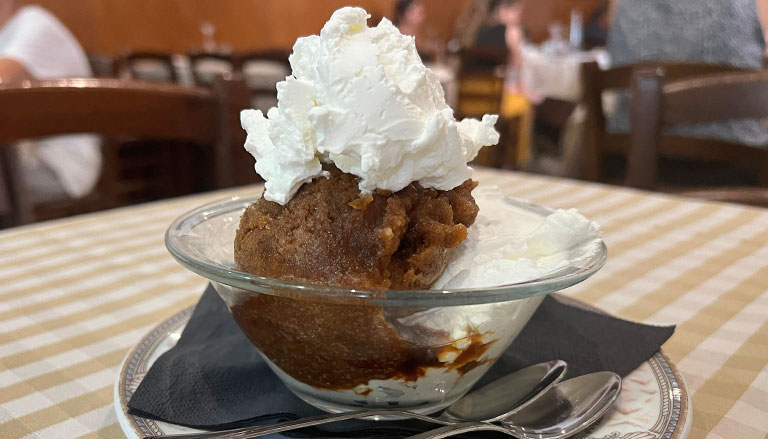Coffee granita: from Sicily to the heart of Rome

The origins How was coffee granita born and how did it spread? Coffee granita is a refreshing dessert that has its roots in Sicily, but was influenced by the Arab tradition of Sharbat, a flavored frozen drink, prepared with fruit juices, flowers and rose water, which was mixed with snow or ice chopped. Originally, the granita was a very rudimentary preparation, similar to the Roman grattachecca: coarsely crushed and flavored ice. Already in the Middle Ages, in Sicily, there was a key figure: the nivarolo. During the harsh winters, these men collected snow on the mountains, from Etna to the Nebrodi, and then stored it in neviere: real natural refrigerators, dug into the mountains or built with insulating materials. With the arrival of summer, the snow w as transported downstream, especially in the coastal areas, where it was particularly appreciated. There, it was grated to obtain a fine and refreshing granita. Until the early twentieth century, this method was widespread under the name of “rattata” (grattata), who then gave his name to the scratch, a term used in Rome. Around the 16th century, however, a more sophisticated cooling technique was used, introduced from the Arab world. A simple wooden container, the cockpit, was filled with a cooling mixture based on sea salt and snow. In the center, a zinc bucket held a mixture to be frozen. By turning a crank, the mixture was kept moving, helping it to freeze uniformly. With the introduction of coffee to Italy by Venetian traders in the 16th century, the idea of a coffee granita began to make its way among the culinary innovations of the time. Thus, in hot Sicily, where lemon granita was already popular, the idea was born of using coffee as a base for a granita, combining it with sugar and crushed ice, until a grainy but uniform consistency was obtained. The result? An ice-cold drink, perfect for facing hot summer days. Today the granita is served in transparent glasses, often with a generous dose of fresh whipped cream, to make it sweeter and creamier and balance the intense and bitter flavor of the coffee. Diffusion in Italy This dessert began to spread throughout Italy, becoming particularly popular in Rome. The coffee granita appeared on the menus of Roman cafés probably as early as the 18th century, when cafés were meeting places for artists, intellectuals and ordinary citizens. However, it is above all, in the 60s and 70s, that the coffee granita with cream became a symbol of the Roman sweet life, served in historic cafés such as Caffè Greco or Tazza d’Oro, frequented by celebrities and cultural figures . Curiosity: coffee cream vs coffee granita In addition to coffee granita, another similar dessert has become popular in Rome: coffee cream. Unlike granita, coffee cream is denser and velvety, prepared with espresso, sugar and cream, all whipped until it obtains a soft consistency. Although relatively new compared to granita, coffee cream has quickly gained popularity in Rome, becoming a pleasant summer alternative to the classic espresso. Genuine flavors and traditions Let’s face it, typical Roman desserts are characterized by a simplicity that enhances the genuineness of the ingredients and continue to be loved for generations. In addition to the coffee granita, we find the classic Maritozzo with cream, tiramisu, ricotta and sour cherry tart and many others! These desserts, which continue to be prepared and loved in the homes and pastry shops of the city, testify to the attachment to tradition and the pleasure that Romans derive from authentic flavours. Today, enjoying one of these desserts means taking a dive into the past, while savoring the timeless charm of simplicity. Also at Ragno d’Oro you can find a variety of desserts, such as tiramisu, our homemade tarts and cakes, but above all, coffee granita with cream! And what do you choose? The “Granita by Ruggero”, suitable for those who are not afraid to exaggerate, or the “Granita by Ileana”, smallest and lighter? Meanwhile, we are waiting for you in our restaurant, to let you taste the different dishes of the Roman tradition and other delicacies! And remember, every Roman dessert is a small story of flavors and culture.
